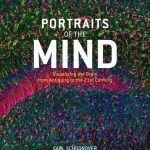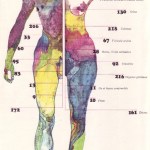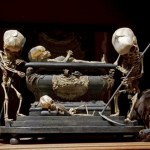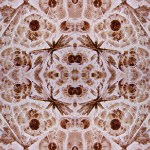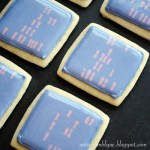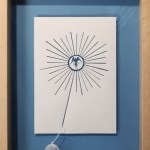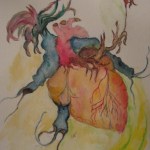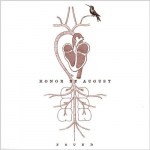Medical Illustration and History
Today's Guardian has a very interesting (though long) article by Richard Holmes, author of The Age of Wonder, about the unsung women of science. In the Guardian piece, Holmes shares some of his research for his forthcoming book, The Lost Women of Victorian Science:
[M]y re-examination of the Royal Society archives during this 350th birthday year has thrown new and unexpected light on the lost women of science. I have tracked down a series of letters, documents and rare publications that begin to fit together to suggest a very different network of support and understanding between the sexes.…
With a poster titled "WE NEED YOUR BODY! For a UNIQUE OPPORTUNITY," microbiologist Steven Park and artist Anne Brodie invited attendees at the British Science Festival to
stand NAKED inside our live bioluminescent photograph booth and have your photograph taken. Enveloped by a living ethereal blue green light, the resulting faint and ghostly image will be used as part of an [art] installation. . .
The eerie results, which look a whole lot like TSA millimeter-wave scans, are appearing in an exhibition at the UK's Royal Institution through December 3. See a slideshow at the Londonist.
Hippocampus: Broad Overview
Tamily Weissman, Jeff Lichtman, and Joshua Sanes, 2005
from Portraits of the Mind: Visualizing the Brain from Antiquity to the 21st Century by Carl Schoonover
The first time I created a transgenic neuron, it was in a worm, C. elegans -- a tiny, transparent cousin of the earthworm. I injected DNA into the embryonic worm, let it grow up, and voila: there was one eerie green blotch like a little Pac-Man ghost, its long green axon a lime racing stripe running along the worm's transparent body. The worm wiggled, but I was the one hooked: science is beautiful.
You…
And now for a completely different type of glass art: this time from sculptor Luke Jerram. His deceptively beautiful glass malaria parasite (see video below) will be auctioned off to benefit Malaria No More.
Via Medical Museion. The "malaria parasite" is also known as Plasmodium falciparum. Read more about Jerram's sculpture here - no, I don't know when the auction will be, but I imagine he'll update his website with the news.
What do you get when you ask Harvard physicist Lisa Randall to curate an art show? A Los Angeles gallery found out, and Wired has the story. My favorite quote:
I asked Mays whether the artists gained an appreciation for physics. "Oh god, yes!" he said. "I've seen them carrying books around about different scientific theories."
No! Not artists with books of scientific theories! The world is upside-down!
Coverage of the Measure for Measure exhibition is here - it sadly closed last weekend, but there are photos online, and I tracked down a few of the sciart contributors, Meeson Pae Yang (with an…
This, this and this all came close, but in the end, it took a book: a yummy new neuroscience, history of science, beauty of science, wow-brains-are-beautiful book.
The other day I heard about something that I just HAD to blog, hiatus/retirement be damned! Portraits of the Mind: Visualizing the Brain from Antiquity to the 21st Century, a new book by neurobiology PhD candidate Carl Schoonover, is coming out in a few weeks, and I'm lucky enough to have a preview copy sitting here before me.
This book encapsulates my original vision for BioE - a narrative that brings science history together…
In the New York Times, a quick article on a study in the journal Neurosurgery by two Johns Hopkins professors. The abstract argues that Michaelangelo
concealed another neuronanatomic structure in the final panel of this series, the Separation of Light From Darkness, specifically a ventral view of the brainstem. The Separation of Light From Darkness is an important panel in the Sistine Chapel iconography because it depicts the beginning of Creation and is located directly above the altar. We propose that Michelangelo, a deeply religious man and an accomplished anatomist, intended to enhance…
Don't be downhearted! Try some of these blogs:
A Journey Round My Skull
Makezine
SPGRA via NOTCOT
Coilhouse
Street Anatomy
Urban Omnibus
Daily Art Muse
Wouldn't You Like To See Something Strange?
Bottled Monsters
Joanna Ebenstein of Morbid Anatomy has just unveiled a new website, the Secret Museum, to house her "exhibition of photographs exploring the poetics of hidden, untouched and curious collections from around the world." So if you can't make it to her show in NYC (through June 6), you can browse her virtual exhibition of photos - like the eerie fetal skeleton tableau above (from Paris, circa 17th century).
So I had the pleasure of meeting the awesome Dr. Isis a few weeks ago. It turns out she is even more awesome in person than she is in pseudonymity. And she brought me a fabulous thing: a scarf from A Slice of Life Scarves. Creator Eve Reaven, a Bay Area cell biologist, "has continuously marveled at the intricacy and beauty of the natural patterns found inside cells. She shares what she has seen with others through designs for scarves and other textiles. In the current selection, she captures the essence of structures related to cell movement, cell traffic, energy and performance. Many of the…
"Fossil geometry" (detail)
Based on Eschschottzia Californica seeds collected by Mr W Reeves, April 1864.
From the collection of the Royal Microscopic Society.
UK sci-artist Heather Barnett has created a line of wallpapers using micrographs of cells, crystals, seeds, nanofibers, etc. They'd be particularly striking in a loft or other industrially inspired space - including a lab or a clinic waiting room. Come on, PIs, you can squeeze a wallpaper budget in your next grant application, can't you?
"Fossil geometry" (repeat)
Check out more of Barnett's biological wallpapers below the fold…
Lately Ms. Humble of Not So Humble Pie, "your typical nerdy biological anthropologist turned stay at home mom and baker of sometimes strange goodies," has cornered the market on science cookies. Check out her beautiful gel electrophoresis cookies (above): they are amazingly convincing AND ethidium bromide free (thank goodness). She's also made drosophila melanogaster cookies, zebrafish cookies, circuit board cookies:
wii-mote and Six axis controller cookies (not science, but come on, gamers and scientists have a high overlap), and blood cell cookies. Check out this educational video using…
An email from reader Jake prompted me to repost this look at Peter Callesen, originally posted back in 2007. Enjoy!
Angel, 2005
paper and glue in artist made frame
Peter Callesen
This beautifully written essay at Cabinet of Wonders, Mechanical Thinking and the Human Soul, includes some amazing sculptures by paper artist Peter Callesen. Callesen's A4 papercut series are razored from a sheet of paper and assembled, still tethered umbilically to their mother sheet, yet folded and glued into a 3D shape that responds to the original 2D negative space they departed.
Halfway through, (detail),…
Der Mensch als Industriepalast [Man as Industrial Palace] from Henning Lederer on Vimeo.
So awesome! Fritz Kahn's poster reimagined as an animation by Henning Lederer. Via Bora.
Somebody in charge of pulling flickr illustrations for Wired's website has a good eye - they used this photo by Stephen Hampshire. A quick visit to flickr, and it turns out the photo is of Hampshire's homemade version of a DIY project originally described by Neil Fraser: a wooden cube brain map/puzzle. Fraser summarized his creation thus:
Last month I took a left-right MRI scan, reconstructed it, and rerendered top-bottom and front-back scans. It was interesting to manipulate the data and extract information which while previously present, was not previously visible. Another method to…
Cornelia Hesse-Honegger's beautiful book Heteroptera is one of my most treasured natural illustration collections. Unfortunately, it seems to be out of print now, but Wired recently compiled a gallery of her work, and I highly recommend a visit.
The subtle and not-so-subtle asymmetries on Hesse-Honegger's specimens, like the cyst-eyed cicada above, are latently sinister: these are insects collected near Three Mile Island, Chernobyl, nuclear plants, and sites downwind of nuclear test grounds. Are the defects Hesse-Honegger catalogs a telltale sign of environmental contamination? Or is she…
Via reader-musician John Danley, I learned of Lori Anne Parker's "Watersketch Prospectus," "a yearlong project and response to a personal health crisis requiring heart surgery." As Danley observes, "her work is related to aesthetic responses to trauma."
After suffering a spontaneous coronary artery dissection, Parker was unable to work with her usual oils, and branched out into watercolor as a medium. Her weekly sketches, each completed in an hour and a half or less, are free-flowing fantasies filled with networks of vines/veins and anatomically inspired botanical imagery. They have a…
The UK History of Advertising Trust has initiated a ghostsigns archive to document old painted billboards - the kind you see on the sides of brick buildings, fading away unnoticed. These old signs are being destroyed daily (by gentrification, new construction, and new billboards being put over them), and very few new ones are being created (for an example, see my previous post on the artists behind the Stella Artois mural in NYC).
Unfortunately, preserving such signs permanently is difficult - and, some argue, not even desirable:
The core dilemmas are that they are not architectural…
Wellcome's renowned London Centre for the History of Medicine will be closed. No one quite knows why, but Thomas has been posting about this at Medical Museion and will keep us updated. There is also a news update in BMJ for those with subscription access. Note that nothing I've seen suggests that the snazzy new Wellcome Collection, also in London, is in any danger.
One of the DC bands I like, Honor By August, has a new cd out- and the cover (the e-cover at least, I haven't seen a hard copy) plays with biomedical imagery.
Sweet - love the little bird! I'd totally take that on a T-shirt and wear it.

